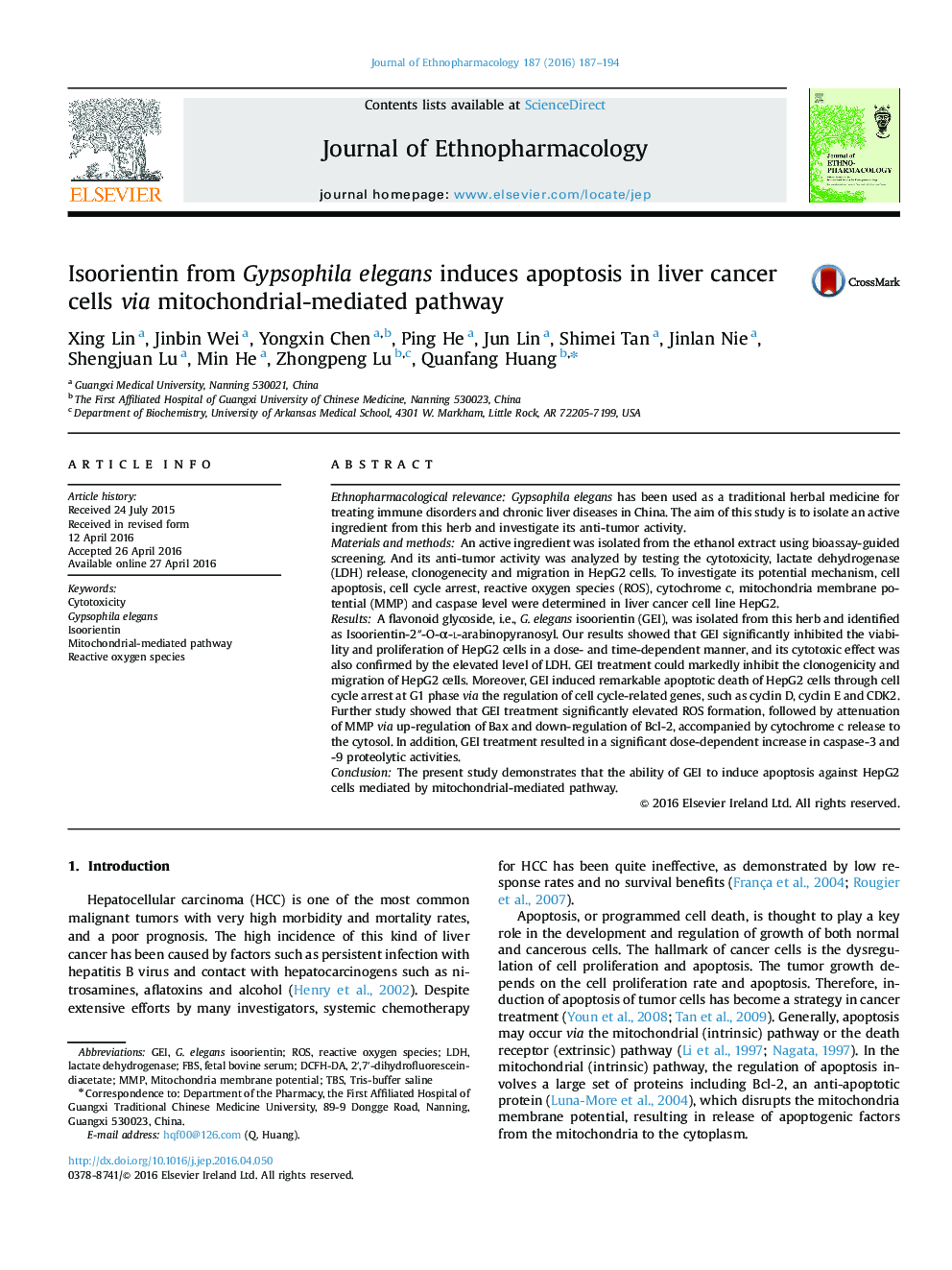| کد مقاله | کد نشریه | سال انتشار | مقاله انگلیسی | نسخه تمام متن |
|---|---|---|---|---|
| 2544671 | 1560375 | 2016 | 8 صفحه PDF | دانلود رایگان |

Ethnopharmacological relevanceGypsophila elegans has been used as a traditional herbal medicine for treating immune disorders and chronic liver diseases in China. The aim of this study is to isolate an active ingredient from this herb and investigate its anti-tumor activity.Materials and methodsAn active ingredient was isolated from the ethanol extract using bioassay-guided screening. And its anti-tumor activity was analyzed by testing the cytotoxicity, lactate dehydrogenase (LDH) release, clonogenecity and migration in HepG2 cells. To investigate its potential mechanism, cell apoptosis, cell cycle arrest, reactive oxygen species (ROS), cytochrome c, mitochondria membrane potential (MMP) and caspase level were determined in liver cancer cell line HepG2.ResultsA flavonoid glycoside, i.e., G. elegans isoorientin (GEI), was isolated from this herb and identified as Isoorientin-2″-O-α-l-arabinopyranosyl. Our results showed that GEI significantly inhibited the viability and proliferation of HepG2 cells in a dose- and time-dependent manner, and its cytotoxic effect was also confirmed by the elevated level of LDH. GEI treatment could markedly inhibit the clonogenicity and migration of HepG2 cells. Moreover, GEI induced remarkable apoptotic death of HepG2 cells through cell cycle arrest at G1 phase via the regulation of cell cycle-related genes, such as cyclin D, cyclin E and CDK2. Further study showed that GEI treatment significantly elevated ROS formation, followed by attenuation of MMP via up-regulation of Bax and down-regulation of Bcl-2, accompanied by cytochrome c release to the cytosol. In addition, GEI treatment resulted in a significant dose-dependent increase in caspase-3 and -9 proteolytic activities.ConclusionThe present study demonstrates that the ability of GEI to induce apoptosis against HepG2 cells mediated by mitochondrial-mediated pathway.
Figure optionsDownload high-quality image (264 K)Download as PowerPoint slide
Journal: Journal of Ethnopharmacology - Volume 187, 1 July 2016, Pages 187–194